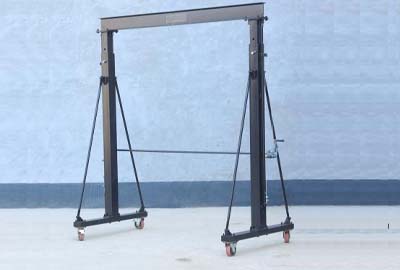industrial gantry
Industrial Gantries Enhancing Efficiency in Modern Manufacturing
In the fast-paced world of manufacturing, efficiency and precision are paramount. One of the key innovations that have significantly enhanced operational efficiency is the industrial gantry. These structures, characterized by their overhead framework that supports various types of machinery and equipment, have become integral to various industries, including automotive, aerospace, and construction. Their design and implementation have transformed how materials are handled and manipulated, enabling businesses to maximize productivity and minimize labor costs.
Industrial gantry systems typically consist of a frame, which supports a conveying mechanism, and can be outfitted with various tools or attachments. This versatility allows for a range of applications, from simple tasks like moving materials from one location to another, to more complex operations involving heavy lifting, precise alignment, and automated workflow. The design of industrial gantries can be tailored to meet the specific needs of different industries, which makes them an invaluable asset in a variety of settings.
Advantages of Industrial Gantries
One of the primary benefits of industrial gantries is their ability to carry heavy loads. In environments where heavy materials are commonplace, conventional handling techniques can be dangerous and inefficient. Gantries offer a safer alternative by utilizing cranes or hoists that are integrated into the structure, reducing the risk of workplace accidents. Moreover, these systems can often handle loads that would be impractical for human workers to lift, thus allowing for a reduction in manual labor and the associated costs.
Additionally, industrial gantries can enhance workflow efficiency. The ability to move items overhead means that floor space can be optimized. This is particularly advantageous in environments where space is limited. With a gantry system in place, the ground remains uncluttered, allowing for better movement of personnel and equipment. This improved layout can lead to faster production times and a more organized workspace, which are essential factors in maintaining competitiveness in a global market.
industrial gantry

Automation and Technological Integration
The advent of automation technology has further revolutionized the use of industrial gantries. Modern systems can be integrated with sophisticated software that allows for real-time monitoring and control. Automation enhances the precision of material handling tasks, ensuring that items are moved accurately and efficiently. This integration not only improves productivity but also minimizes human error, which can lead to costly mistakes in manufacturing processes.
Furthermore, as the industry shifts towards smart manufacturing, gantry systems are increasingly being equipped with sensors and IoT technology. These advancements enable predictive maintenance, where the system can alert operators to potential issues before they become significant problems. This proactive approach to maintenance not only extends the longevity of the equipment but also contributes to uninterrupted production cycles.
Conclusion
In conclusion, industrial gantries represent a significant advancement in the field of manufacturing and materials handling. Their ability to safely move heavy loads, optimize floor space, and integrate with modern automation technologies makes them an invaluable tool for today’s industries. As businesses continue to seek out methods to enhance productivity and efficiency, the role of industrial gantries will undoubtedly expand, paving the way for new innovations and improvements in manufacturing processes. Embracing this technology not only provides businesses with a competitive edge but also contributes to safer, more efficient work environments tailored to meet the demands of a rapidly evolving market. As we look to the future, the potential for industrial gantries to adapt and integrate with emerging technologies will play a crucial role in shaping the next generation of manufacturing solutions.
-
Portable 2000 lb Gantry Crane | Heavy-Duty & AdjustableNewsAug.30,2025
-
Versatile Lifting Solutions with Gantry and Overhead CranesNewsAug.29,2025
-
The Versatile Mobile Gantry Crane SolutionNewsAug.29,2025
-
Reliable Movement with Heavy Machinery Skates and RollersNewsAug.29,2025
-
Reliable Lifting Performance with 2000 lb Gantry Crane and 2 Ton Overhead SystemsNewsAug.29,2025
-
Maximize Lifting Efficiency with PML Magnetic LiftersNewsAug.29,2025
-
Efficient Relocation Starts with Reliable Machinery MoversNewsAug.29,2025
